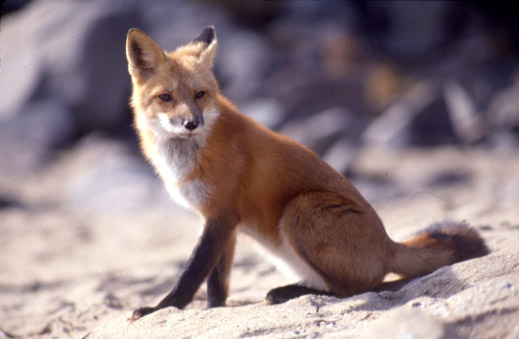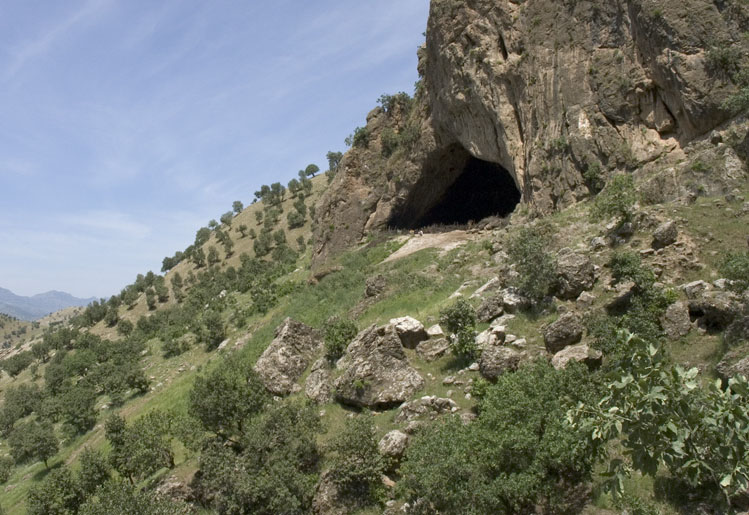
One of the most interesting and important episodes of the Book of deeds of Ardashir son of Babak is his adventures with the Kurds (ca 220s AD).
Ardashir's mother, like Nizami Ganjavi's mother was of Kurdish descent. Ardawan, the last emperor of Parthians in a letter calls Ardashir ''a Kurd and raised by Kurds''.
With regards to Kurds, book of deeds of Ardashir elaborates Ardashir's attack on kingdom of Corduene, that is the northern Mesopotamia from lake Urmia to Euphrates; In this battle Madig king of Kurds, severely defeats Ardashir. Later Ardashir after having prepared a large army, rushes upon the Kurds and surprizes them with a night attack and finally defeates the Kurds after facing a severe resistance. Ardashir sends all the booty he collected from this battle to Pars.
On the road the army of Haftan-bokht, ''the king of the Kirm'' (i.e. Kirmanshah), struck against them, seized the entire wealth, property, and portable lodges from those cavalry soldiers of Ardashir, and carried them into Guzaran (modern Kuzaran, located to the west of city of Kermanshah and to the east of Sarpol Zahab), one of the boroughs of Gular (modern Kalar, to the north of Kuzaran), where Kirmanshah had its abode.
''Kirm'' is the old and middle Iranic for ''serpent''. The people of Kurdistan were known as people of serpent (by ethnic Hayqs of Armenia as ''Mar'', serpent, snake); Indeed, in Assyrian records the gate to the road to the Kimmerian was named ''Musasir'', which literally means ''Exit of Serpent''.
Ardashir then entertained this idea: "I shall go to Armenia (northeastern Anatolia, north of lake Van) and Ataropatgan (or Atropatene; east of lake Urmia), because Yazdan-kard (Domitianus) of Shaharzur (now Suleimania) has with many soldiers and heroes, passed beyond the frontiers of Shaharzur which at that time was part of the the kingdom of Garmian and its capital was at Kirkuk, concluded a treaty with the ruler of the land of shah of Kirm (or land of Kirmanshah), and become his ally." But as soon as Ardashir heard of the assault and victory of the sons of Haftan-bokht towards his (Ardashir's) army, he decided to firstly, put in order the affairs at Pars and become fearless of the enemies, and after that begin to meddle with other enemies."
It is mentioned also that the kingdom of Kirm was able to recruit significant numbers of troops from ''the land of Sind'', that is the area of Duhok and Zaxo.
Then Ardashir dispatched an innumerable army with chieftains to the battle of Kirmanshah. The army of Kirmanshah deposited their entire wealth, riches, property, and portable lodges in the citadel and fortress of Guzaran, and privately took refuge in mountain cavities. And the cavalry of Ardashir had no knowledge thereof, so they, on reaching the foot of the fortress of Gular, blockaded the citadel. When night fell, the army of Kirmanshah attacked them, committed bloodshed, killed many of Ardashir's troops, and seized from them horses, saddles, saddle-tackles, property, and portable lodges. With lamentation and dishonor, the troops returned to Ardashir in a disgraceful condition and unarmed...
Ardashir became much distressed, and consequently, invited to his capital all his troops from different cities and territories, and engaged himself with a large army to battle against Kirmanshah.
When he arrived at the fortress of Guzaran, the whole army of Kirmanshah had encamped itself inside the fortress, so he too encamped his army round the outer walls of the fortress.
The Shah of Kirm, Haftan-bokht, had seven sons, and each of them was appointed by him governor of a city with one thousand men under him. At this juncture, one of the sons, who was in Arvastan (Arabia; west of Euphrates), came by the passage of a sea, with a, large army composed of soldiers from Arabia and Mazenderan, and stood against Ardashir in battle.
The army of Kirmanshah, which had been inside the fortress, completely marched out, and vehemently struggled and fought with Ardashir's troops, many being killed on both sides. When the army of Kirmanshah came out of the fortress, it took such a by-road that it became impossible for any of Ardashir's troops to go out of the camp or to bring in any food for himself or fodder for his horses, and, consequently the satiety of all men and animals was changed into want of food and helplessness.
When Mitrok, son of Anoshepat, an inhabitant of Zarham in Pars, heard that Ardashir was without provision near the capital of land of Kirmanshahan , and obtained no victory over its army; he accoutered his troops and heroes, marched towards the residence of Ardashir, and carried away all the wealth and riches of Ardashir's treasure.
Ardashir, hearing of such violation on the part of Mitrok and other men of Pars, reflected upon it for a while thus: "I ought to postpone the battle with Kirmanshah, and then go to fight out a battle with Mitrok." He, therefore, summoned all his forces back to his quarters, deliberated with their commanders, first sought the means of delivering himself and his army.
That very moment a long arrow, dispatched from the fortress, came down and pierced, as far as its feathers, through the roasted lamb that was on the table.
On the arrow it was written as follows: "This arrow is darted by the troops of the lord of the glorious Dragon; we ought not to kill a great man like you, so we have struck that roasted lamb," Ardashir, having observed the state of things, disencamped his army and withdrew from the place.
The army of Kirmanshah hastened after Ardashir, and hemmed in his men again in such a manner that Ardashir's army could not proceed further. So Ardashir himself passed away singly by the sea-coast
Ardashir marched again towards Ardashir-Gadman, undertook the battle with Mitrôk, son of Anoshepat, killed Mitrok, and took possession of his territory, land, wealth and property.
Then Ardashir disguised himself as a merchant from Kkorasan and enetred the castle of Kirmanshah and poisoned him by a trick.
Ardashir commanded that the fortress should be razed to the ground and demolished, while on its site he ordered the city which they call Guzaran to be erected. In that quarter he caused an Atash-i Warharan to be enthroned. He loaded on the backs of one thousand camels the wealth, property, gold, and silver contained in the fortress, and dispatched them to Gobar. Then Ardashir installed a friendly and trusted vassal kingdom over the area of Kirmanshahan, which lasted from 226 to 380 AD. and is known as Kayusid or Kavusakan. A number of tombs cut into living rock in the mountains of the Kermanshah region is believed to date back from the House of Kayus. The most famous carvings in Kermanshah are at Taq Bustan believed to be the historic site of the dynasty.
The book of deeds of Ardashir further mentions his battle in Mokristan (Mokriyan, abode of Mokri Kurds, to the northeast of Garmiyan) and Barjan (abode of Barzan Kurds, between Garmiyan and Sind).
Although the topography of the story mentioned in the book of deeds of Ardashir precisely fits that of geography of Kurdistan, some biased western scholars tried in past to falsify this remarkable part of Kurdish history by linking it to the dry and uninhabitable deserts of eastern Iran, however it was protested by intelligent Kurdish intellectuals such as Mihrdad Izady who in his great and precious article ''QALEH-I YAZDIGIRD Cultural Treasure of the Kurdish Past'' (1993) clarifies the history of a mountain castle in Kirmanshahan to the ancient castle of king of Kirm in Guzaran.
(Image: Ardashir is believed to be standing here in this relief at Taq-e Bostan. On the left is an Iranic Izad (god), on the right is Kayus of Kirmanshah, and below him is Haftanbokht.)




_of_Hewl%C3%AAr_(Erbil).jpg)







